Otoplasty in Monterrey
Search and Compare the Best Clinics and Doctors at the Lowest Prices for Otoplasty in Monterrey

Find the best clinics for Otoplasty in Monterrey
With Medijump you can browse 3 facilities offering Otoplasty procedures in Monterrey. The cheapest price available is $1,578 in Mexicali, Cancun
Otoplasty in Mexico
Price: $ 1,578
Otoplasty in Mexicali
Price: $ 1,578
Otoplasty in Guadalajara
Price: $ 1,803
Egypt offers the best prices Worldwide
Price: $ 100
From 2 verified reviews
Rodrigo Cavazos, 09 August 2020
I do not recommend it at all, he has no tact with his clients, I was just going to waste my time
Dr. Alvar Garcia Plastic Surgery Monterrey, located in Calle Ecuador, Monterrey, Mexico offers patients Otoplasty procedures among its total of 25 available procedures, across 1 different specialties. The cost of a Otoplasty procedure starts from ฿78,900, whilst the national average price is approximately ฿73,840. All procedures and treatments are undertaken by the lead specialist at the Clinic, and they are accredited by ISAPS (International Society of Aesthetic Plastic Surgery)
Medcozy, Turismo Medico, located in Calle Ecuador, Monterrey, Mexico offers patients Otoplasty procedures among its total of 35 available procedures, across 9 different specialties. Currently, there's no pricing information for Otoplasty procedures at Medcozy, Turismo Medico, as all prices are available on request only, whilst the national average price is approximately $2,052. All procedures and treatments are undertaken by the lead specialist at the Hospital, and they are not accredited by any recognized accreditations institutes
Compare Before & After Photos of _procedure_photos.phpOtoplasty
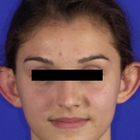
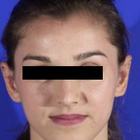
Front view
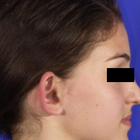
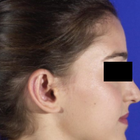
Full-side view


Front view

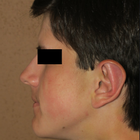
Full-side view
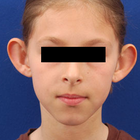
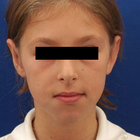
Front view
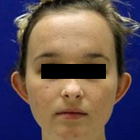
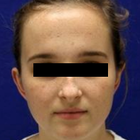
Front view
WHY US?
At Medijump, we're making medical easy. You can search, compare, discuss, and book your medical all in one place. We open the door to the best medical providers worldwide, saving you time and energy along the way, and it's all for FREE, no hidden fees, and no price markups guaranteed. So what are you waiting for?

Free

Best Price

Widest Selection

Risk-Free
What you need to know about Otoplasty in Monterrey

Otoplasty, also referred to as cosmetic ear surgery, is a type of cosmetic procedure to change the size, shape, or position of the ear. It is performed on the visible part of the outer ear, called auricle. Some people choose to have the surgery to correct odd-shaped ears due to an injury or birth defect. Others have it because they are concerned with how their ears protrude too far from their head. Otoplasty can be performed at any age after the ears have reached their full size, generally after age 5. In some cases, the surgery may be done as early as age 3.
There are several types of otoplasty. The following are the most common:
- Ear pinning draws the ears closer to the head. It is usually done on people whose ears stick out too far from their head.
- Ear augmentation is ideal for individuals whose ears are small or have not completely developed. This type of otoplasty can increase the size of the outer ear.
- Ear reduction is usually done on people with macrotia, which is a condition when the ears are larger than normal. Otoplasty can reduce the size of the ears.
What does a Otoplasty Procedure Involve?
Otoplasty is typically carried out under local anesthesia with a sedative, so you will be awake but you will not feel any pain. In some cases, general anesthesia may be used, typically for younger children.
The techniques used by your surgeon vary based on the type of otoplasty you are having. In general, your surgeon makes an incision either within the inner creases of your ears or on the backs of your ears. Then, your surgeon manipulates the tissue of the ear, which may include removal of cartilage or skin, grafting of cartilage to the ear, or folding and shaping of cartilage using permanent stitches. Once your surgeon is done correcting the shape, size, and position of your ears, the incisions are closed with stitches.
How Long Should I Stay in Monterrey for a Otoplasty Procedure?
Otoplasty can take between 1 and 3 hours to perform, depending on the complexity and the specifics of the procedure. It is typically done as an outpatient procedure, which means you can leave the hospital on the same day. It is recommended that you stay in Monterrey for 7 more days for follow-up checkups and removal of stitches.
What's the Recovery Time for Otoplasty Procedures in Monterrey?
The recovery period may vary from one person to another. You may experience numbness for several weeks, and mild bruising for about 2 weeks. For several months, your ears may feel stiff and sore.
You should be able to go back to work and resume your normal activities, including exercise, within one to two weeks after surgery. Physical contact sports, such as rugby, football, or judo, should be avoided for at least 3 months. You should also avoid swimming for up to 8 weeks following your otoplasty.
What sort of Aftercare is Required for Otoplasty Procedures in Monterrey?
Your surgeon will provide post-operative instructions. Make sure to follow the instructions carefully to promote smooth and quick recovery. You should rest with your head elevated on 2-3 pillows to minimize swelling. It is recommended that you eat a light, soft, and cool diet for several days. Take pain medication as prescribed by your doctor. Avoid sleeping on your side or rub the incisions to keep pressure off your ears. Consider wearing shirts with loose-fitting collars or button-down shirts.
What's the Success Rate of Otoplasty Procedures in Monterrey?
Otoplasty is a safe and effective procedure, with high satisfaction rates. More than 90% of people who had the procedure claimed to be extremely happy with the results. Note that it may take some time for the result to be fully visible.
While it is a safe procedure, you still need to be aware of possible risks and complications that otoplasty carries. These include bleeding, hematoma formation, infection of the skin, infection of the cartilage of the ear, permanent or temporary numbness around the affected area, scar or keloid formation, unfavorable results, prolonged pain, narrowing of the external ear canal, impaired healing, changes in skin sensation, asymmetry, and overcorrection.
Are there Alternatives to Otoplasty Procedures in Monterrey?
There are not many viable alternatives to otoplasty as of yet. One of the most popular alternatives is nonsurgical otoplasty, which does not require any incisions. The procedure uses special sutures to pin the ears back and achieve a more symmetrical look. These sutures are woven into the ears and will remain in place permanently. They are also virtually invisible, so the results will look natural.
For babies under three months old with prominent ears, ear-molds can be taped to their ears to reshape the ears without surgery. This type of treatment typically takes about six to eight weeks.
What Should You Expect Before and After the Procedure
Before otoplasty, you may have prominent or large ears or other deformity caused by an injury or birth defect that bothers you. Some people also feel self-conscious and embarrassed by the shape, size, and position of their ears. After the procedure, your ears will be corrected. Small or underdeveloped ears will be augmented to increase the size, the size of large ears will be reduced, and prominent ears will be drawn closer to the head. Your appearance will improve and you may feel more confident.
Whilst the information presented here has been accurately sourced and verified by a medical professional for its accuracy, it is still advised to consult with your doctor before pursuing a medical treatment at one of the listed medical providers
No Time?
Tell us what you're looking for and we'll reachout to the top clinics all at once
Enquire Now

Popular Procedures in Monterrey
Prices Start From $28

Prices Start From $1,945

Prices Start From $120

Prices Start From $275

Recommended Medical Centers in Monterrey for Otoplasty

- Interpreter services
- Translation service
- Religious facilities
- Medical records transfer
- Medical travel insurance
- Health insurance coordination
- TV in the room
- Safe in the room
- Phone in the room
- Private rooms for patients available

- Interpreter services
- Translation service
- Religious facilities
- Medical records transfer
- Medical travel insurance
- Health insurance coordination
- TV in the room
- Safe in the room
- Phone in the room
- Private rooms for patients available

- Interpreter services
- Translation service
- Religious facilities
- Medical records transfer
- Medical travel insurance
- Health insurance coordination
- TV in the room
- Safe in the room
- Phone in the room
- Private rooms for patients available

- Interpreter services
- Translation service
- Religious facilities
- Medical records transfer
- Medical travel insurance
- Health insurance coordination
- TV in the room
- Safe in the room
- Phone in the room
- Private rooms for patients available

- Interpreter services
- Translation service
- Religious facilities
- Medical records transfer
- Medical travel insurance
- Health insurance coordination
- TV in the room
- Safe in the room
- Phone in the room
- Private rooms for patients available

- Interpreter services
- Translation service
- Religious facilities
- Medical records transfer
- Medical travel insurance
- Health insurance coordination
- TV in the room
- Safe in the room
- Phone in the room
- Private rooms for patients available

- Interpreter services
- Translation service
- Religious facilities
- Medical records transfer
- Medical travel insurance
- Health insurance coordination
- TV in the room
- Safe in the room
- Phone in the room
- Private rooms for patients available

- Interpreter services
- Translation service
- Religious facilities
- Medical records transfer
- Medical travel insurance
- Health insurance coordination
- TV in the room
- Safe in the room
- Phone in the room
- Private rooms for patients available

- Interpreter services
- Translation service
- Religious facilities
- Medical records transfer
- Medical travel insurance
- Health insurance coordination
- TV in the room
- Safe in the room
- Phone in the room
- Private rooms for patients available
Otoplasty in and around Monterrey
About Monterrey
Nuevo León, a northeastern state in Mexico, takes pride in its capital, Monterrey, a major financial hub for the nation. Serving as a manufacturing and industrial center, Monterrey is also home to a plethora of large Mexican and international businesses. With an impressive GDP (PPP) amounting to US$ 123 billion, it holds the distinction of being the second-most productive city in Mexico. Additionally, its population marking of 5 million residents simultaneously places it as the country's third-most populous city.
Monterrey has successfully carved out a reputation in the tourism sector, particularly drawing global attention as a favored destination for medical tourism. The underlying factors for this growing attraction can be attributed to the following reasons:
- The healthcare industry, banking, and telecommunication are the pillars of the City’s economy.
- The City has some acclaimed hospitals that offer cutting edge treatments. Most hospitals have JCI accreditation, a certification that ensures safety and quality across the healthcare industry.
- Low prices and above-average quality of medical care are the two main reasons that attract medical tourist attention.
- Proximity to the US also provides a big advantage to patients and tourists from the United States of America.
- The most popular procedures are breast augmentation and liposuction and are performed at Dr. Sauceda Plastic Surgery, Dr. Alvar Garcia Plastic Surgery Monterrey, and Dr. David Kirsch M.D. Cosmetic Surgery
Popular Areas in Monterrey
-
The Macroplaza is the largest park in Mexico and is surrounded by many historical buildings and museums. It is a popular spot for locals and tourists alike to relax and enjoy the outdoors.
-
Fundidora Park is a heritage museum and public park that was once home to a steel mill. Today, the park is a popular destination for families and tourists alike, with a variety of attractions including a museum, a zoo, and an amusement park.
-
The Museum of Modern Art displays the works of Ricardo Mazal, Antony Gormley, and Jenny Holzer. The museum is noted for its sculpture yard and restaurant.
-
Cerro de la Silla, Is popular for its great urban hiking trail up the tall mountain for its fantastic view of Monterrey and the surrounding areas.
-
Cerro del Obispado is a historical site that houses a museum and offers panoramic views of the city. It is a popular spot for tourists and locals alike to learn about the history of Monterrey and enjoy the views.
-
To get a glimpse of a traditional wrestling match, Coliseo is the place to be. If you are lucky and brave enough, then you may even get to see a traditional bullfight.
Weather and Climate in Monterrey
It has a dry climate and is one of the hottest cities in Mexico, winters tend to be moderate, while summers can reach high levels of heat. The hot season, which spans from May to September, is often accompanied by rainfall. For the rest of the year, the climate remains mild with relatively minimal temperate fluctuations, and there's hardly any rain during the cold season.
Monterrey can exhibit drastic shifts in its weather scenarios. For instance, a sudden shower during the summer can cool the temperatures down significantly. Conversely, the winter season might witness balmy temperatures in the absence of city-crossing winds. Instances of ice, snow, and sleet are quite the rarity in this region.
Getting around in Monterrey
In Monterrey, there are primarily two airports dedicated to catering a variety of air traffic. The main airport used for commercial flights is Monterrey International Airport. The secondary airport, comparatively smaller, primarily serves private and cargo aircraft traffic. Monterrey International Airport efficiently accommodates a mix of both international as well as domestic travel audiences.
American, United, Delta, and Copa are some of the international airlines that connect it to Houston, Los Angeles, Atlanta, Chicago, Detroit, Dallas, Las Vegas, San Antonio, etc. People can travel to the nearby Mexican cities of Guadalajara, Mexico City, Cancun, Mazatlan, Puerto Vallarta, and Tijuana using Interjet, Aeromar, Magnicharters, and Volaris. At the same time Interjet, Aeromexico, and Viva Aerobus cater to both domestic and international travelers.
Monterrey houses the largest bus terminal in the northern region of Mexico, offering a significant connectivity advantage. Individuals can travel to and from Monterrey and various other bus stations dispersed across Mexico and the US using trans-border buses. Given Monterrey’s closeness to the US-Mexico border, a car ride from the US is another feasible transportation choice.
Moving around within the city is quite feasible and straightforward. Although efficient, the subway system's coverage is relatively limited. The optimum choice for commuting is the taxi service, which may come with a slightly higher cost compared to bus rides. It's advisable to request the driver to go by the meter to guarantee fair charges.
Tourist Visas in Monterrey
Citizens of 67 countries, including Australia, Canada, Schengen countries, the USA, the UK, and Japan, do not need a tourist visa to visit Monterrey, Mexico, for up to 180 days, as long as their trip does not provide any monetary benefit to them. People who have a valid visa to the US and PR in Canada also do not need a separate visa to enter Mexico. The exemption is available to many countries in South America and the Caribbean Islands also. You can check your eligibility on the official website of the Mexican government.
Citizens of other countries will need to obtain a tourist visa to visit Monterrey, Mexico. The tourist visa is valid for six months from the date of entry. You can apply for a visa at the Mexican consulate in your country.
Required documents for a tourist visa:
- Valid passport with at least six months of validity remaining beyond your planned date of departure from Mexico.
- Visa application form.
- Two passport-sized photos.
- Proof of onward travel, such as a return flight ticket.
- Proof of financial resources, such as a bank statement or credit card statement.
- Visa processing fee.
Additional Information
- The local currency used in Monterrey, Mexico, is the Mexican peso (MXN). The exchange rate for the Mexican peso fluctuates daily, but it is currently trading between 20 and 21 Mexican pesos to the euro and 18 to 19 Mexican pesos to the US dollar.
- You can use a credit card for payment at big stores, hospitals, and restaurants. Smaller merchants and establishments may not accept credit cards. Therefore, it is better to carry some local currency. You can also use the ATMs available in the city to withdraw local currency. The use of cards may involve certain transaction charges. Tipping is not compulsory. However, people appreciate some form of tipping; somewhere between 10 to 15 % of the total bill is the norm. Porters also get tipped, say, 10 pesos per bag.
- Mexico Spanish or Castilian Spanish is the main language here. Locals can also communicate in English as well. It would still be an advantage if you can say some basic phrases in Spanish.
- The majority of the people living in Monterrey are Christians.
- Mexicans observe holidays on Christian festivals and some national holidays. Christmas and New Year’s Day are the two main public holidays. Independence Day on 16th September and Revolution day on the third Monday of November are the two main national holidays. Apart from this, there are many other holidays.
Popular Searches
- Plastic Surgery in Thailand
- Dental Implants in Thailand
- Hair Transplant in Thailand
- Breast Augmentation Thailand
- Gastric Sleeve in Thailand
- Gender Reassignment Surgery in Thailand
- Laser Hair Removal in Bangkok
- Botox in Bangkok
- Dermatology in Bangkok
- Breast Augmentation in Bangkok
- Coolsculpting in Bangkok
- Veneers in Turkey
- Hair Transplant in Turkey
- Rhinoplasty in Turkey
- Stem Cell Therapy in Mexico
- Rhinoplasty in Mexico
- Liposuction in Mexico
- Coolsculpting in Tijuana
- Rhinoplasty in Korea
- Scar Removal in Korea
- Gastric Sleeve in Turkey
- Bone Marrow Transplant in India
- Invisalign in Malaysia
- Plastic Surgery in the Dominican Republic
- Tummy Tuck in the Dominican Republic
- Plastic and Cosmetic Surgery in Poland
- Rhinoplasty in Poland
- Hair Implant in Poland
- Dental Implants in Poland
- IVF in Turkey


